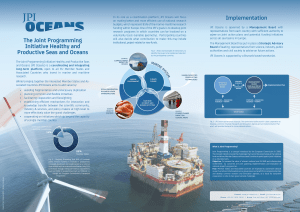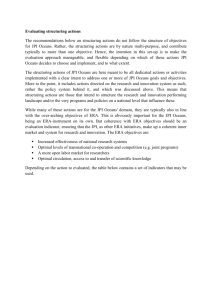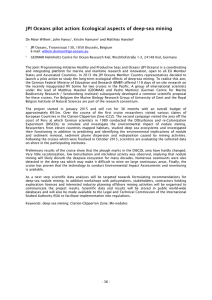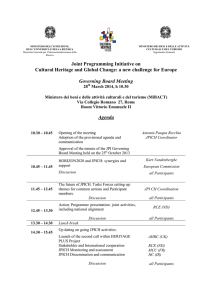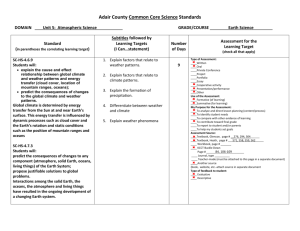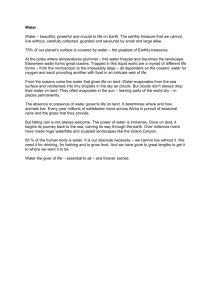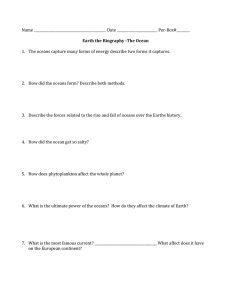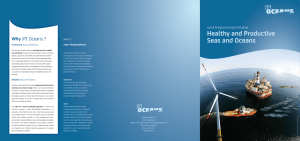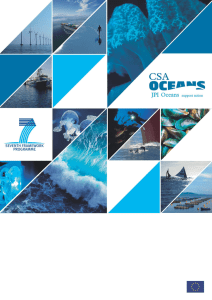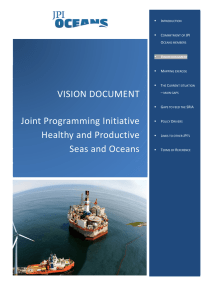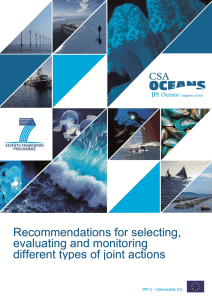JPI Oceans’ Pilot Actions
advertisement
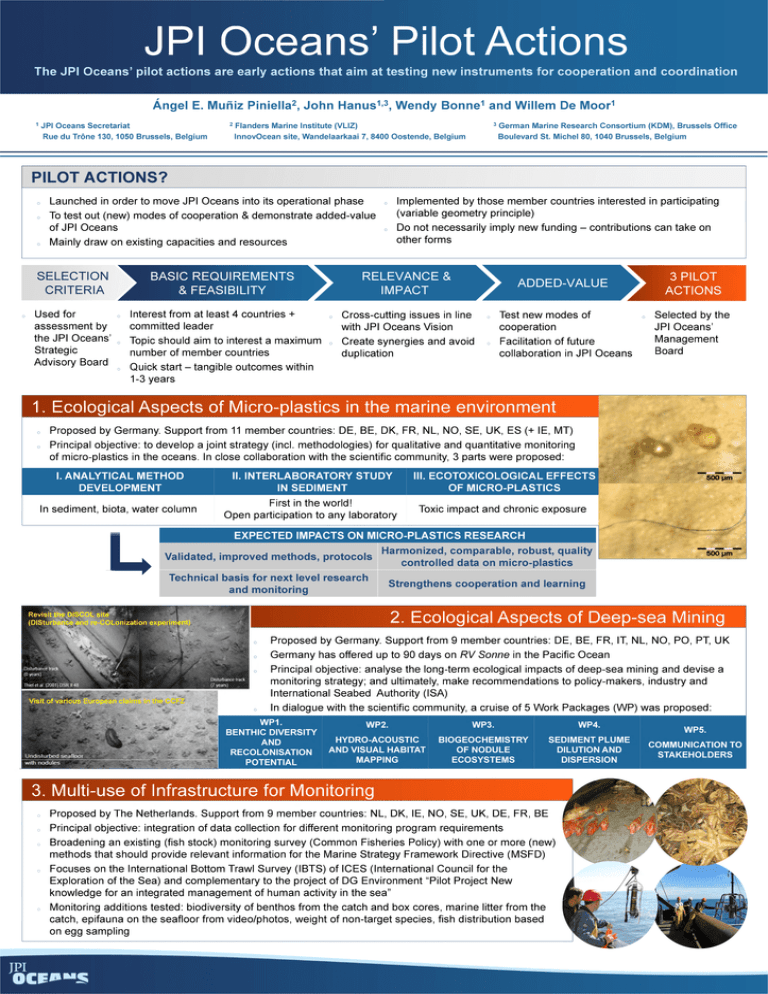
JPI Oceans’ Pilot Actions The JPI Oceans’ pilot actions are early actions that aim at testing new instruments for cooperation and coordination Ángel E. Muñiz Pimelia2, John Harms13, Wendy Bonne1 and Willem De Moor1 1 JPI Oceans Secretariat 3 German Marine Research Consortium (KDM), Brussels Office 2 Flanders Marine Institute (VLIZ) InnovOcean site, Wandelaarkaai 7, 8400 Oostende, Belgium Rue du Trône 130,1050 Brussels, Belgium Boulevard St. Michel 80, 1040 Brussels, Belgium PILOT ACTIONS? Launched in order to move JPI Oceans into its operational phase To test out (new) modes of cooperation & demonstrate added-value of JPI Oceans Mainly draw on existing capacities and resources Implemented by those member countries interested in participating (variable geometry principle) Do not necessarily imply new funding - contributions can take on other forms SELECTION CRITERIA BASIC REQUIREMENTS & FEASIBILITY RELEVANCE & IMPACT Used for assessment by the JPI Oceans’ Strategic Advisory Board Interest from at least 4 countries + committed leader Topic should aim to interest a maximum number of member countries Quick start - tangible outcomes within 1-3 years Cross-cutting issues in line with JPI Oceans Vision Create synergies and avoid duplication 3 PILOT ACTIONS ADDED-VALUE o o Test new modes of cooperation Facilitation of future collaboration in JPI Oceans Selected by the JPI Oceans’ Management Board 1. Ecological Aspects of Micro-plastics in the marine environment Proposed by Germany. Support from 11 member countries: DE, BE, DK, FR, NL, NO, SE, UK, ES (+ IE, MT) Principal objective: to develop a joint strategy (incl. methodologies) for qualitative and quantitative monitoring of micro-plastics in the oceans. In close collaboration with the scientific community, 3 parts were proposed: I. ANALYTICAL METHOD DEVELOPMENT INTERLABORATORY STUDY IN SEDIMENT First in the world! Open participation to any laboratory In sediment, biota, water column Revisit the Dl! (DISturl . ECOTOXICOLOGICAL EFFECTS OF MICRO-PLASTICS Harmonized, comparable, robust, quality controlled data on micro-plastics Technical basis for next level research and monitoring Strengthens cooperation and learning 3-COLonization experim« m Disturbance track (0 years) Disturbance track (7 years) . Visit of various E « Proposed by Germany. Support from 9 member countries: DE, BE, FR, IT, NL, NO, PO, PT, UK Germany has offered up to 90 days on RV Sonne in the Pacific Ocean Principal objective: analyse the long-term ecological impacts of deep-sea mining and devise a monitoring strategy; and ultimately, make recommendations to policy-makers, industry and International Seabed Authority (ISA) In dialogue with the scientific community, a cruise of 5 Work Packages (WP) was proposed: % ¿\ ttv ; -271 3. Multi-use of Infrastructure for Monitoring o o o o o 500 pm 2. Ecological Aspects of Deep-sea Mining sité^ on Undisturbed seafloor with nodules 500 pm Toxic impact and chronic exposure Validated, improved methods, protocols Thiel et al. (2001) DSR I I 48 d t) ■ Proposed by The Netherlands. Support from 9 member countries: NL, DK, IE, NO, SE, UK, DE, FR, BE Principal objective: integration of data collection for different monitoring program requirements Broadening an existing (fish stock) monitoring survey (Common Fisheries Policy) with one or more (new) methods that should provide relevant information for the Marine Strategy Framework Directive (MSFD) Focuses on the International Bottom Trawl Survey (IBTS) of ICES (International Council for the Exploration of the Sea) and complementary to the project of DG Environment “Pilot Project New knowledge for an integrated management of human activity in the sea” Monitoring additions tested: biodiversity of benthos from the catch and box cores, marine litter from the catch, epifauna on the seafloor from video/photos, weight of non-target species, fish distribution based on egg sampling
